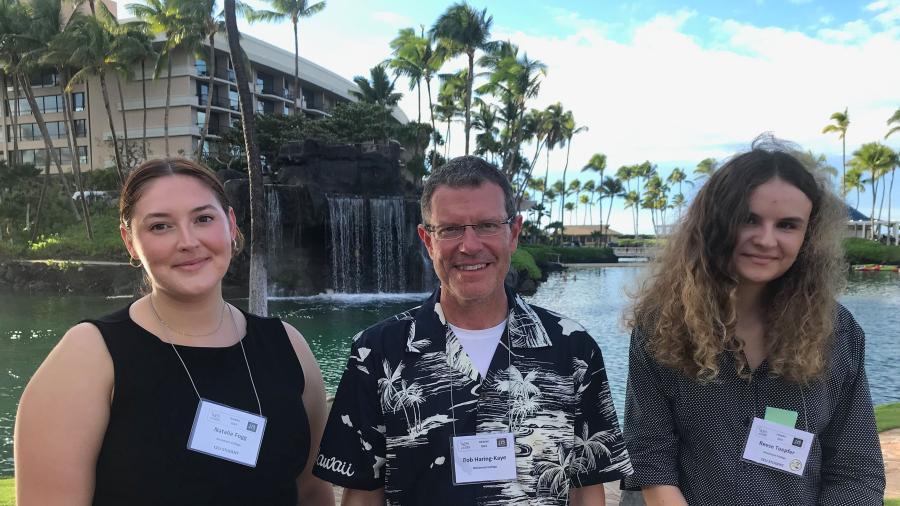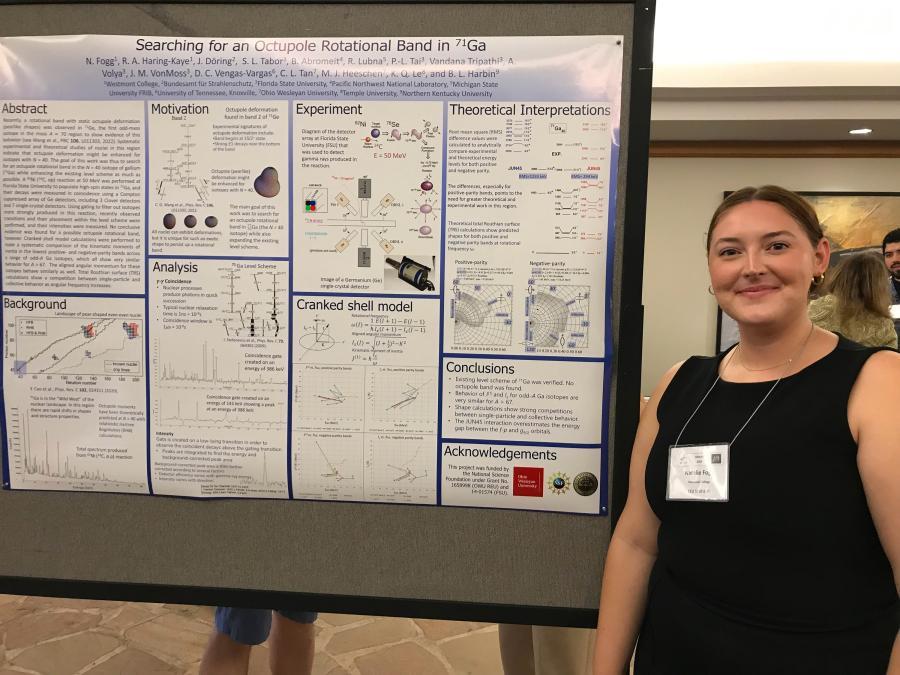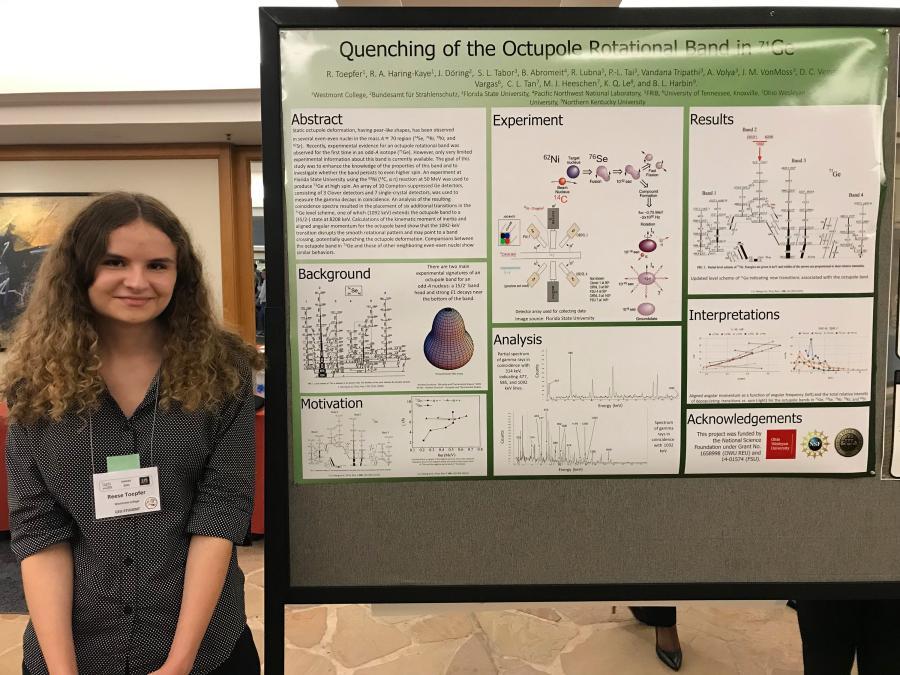Students Reveal Physics Findings in Hawaii

Two Westmont students presented their research at a joint meeting of the Nuclear Physics Divisions of the American and Japanese Physics Societies Nov. 26-Dec. 1 on the Big Island of Hawaii. Natalie Fogg '24 and Reese Toepfer '26 joined Robert Haring-Kaye, Westmont professor of physics and department chair of physics and engineering, at the event that featured more than 100 undergraduates from both nations. Both students received funding from the competitive Conference Experience for Undergraduates program of the National Science Foundation that fully supported their conference registration, lodging and travel costs.
“This is a unique opportunity for our students because they are performing the same kind of research that graduate students would be doing at larger institutions, including complex data processing and analysis,” Haring-Kaye says.
Both Fogg and Toepfer were investigating atomic nuclei that are either known or predicted to exhibit pear-like shapes as they spin, an unusual characteristic of the isotopes they were studying which had an odd number of protons and neutrons inside. Haring-Kaye presented research on a nucleus with energies that are not well reproduced by contemporary theoretical predictions.
Although Fogg and Toepfer did not participate in the actual experiment that produced the data they analyzed and presented in Hawaii, next spring they will have the opportunity to help with the setup and operation of a new experiment at the particle accelerator lab at Florida State University.
“It’s very rare these days for undergraduates to get hands-on experience with operating a particle accelerator and the associated instrumentation that’s used to measure the products of the resulting reactions,” says Haring-Kaye, who spoke at the conference.
The research he and his students are conducting is important since we don't fully understand how an atomic nucleus works. “Although there are no direct applications of this work, historically fundamental research in nuclear physics has led to critical advances in technology used for medicine, safety and national defense,” Haring-Kaye says. “These include such things as medical imaging, cancer detection and treatment, smoke detectors and monitoring cargo for contraband.”

